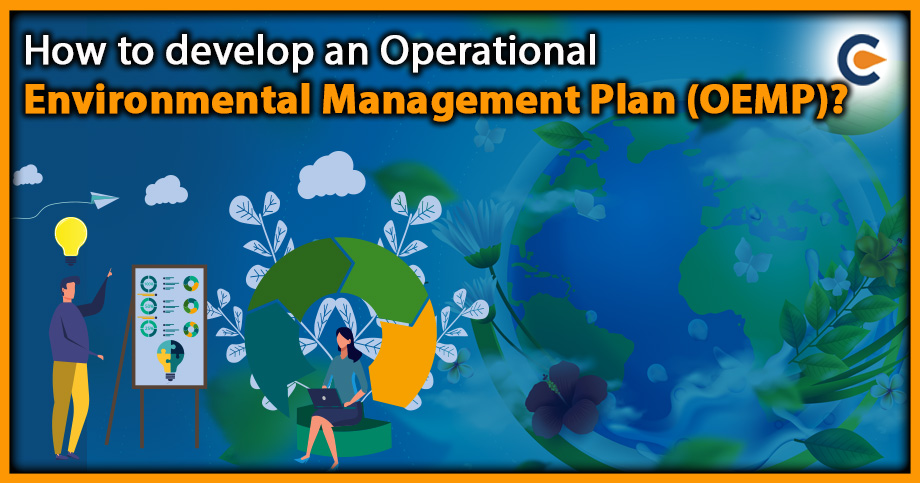An Operational Environmental Management Plan (OEMP) offers specific guidelines for the operational activities carried out within a project. It also outlines the roles and responsibilities for mitigating, monitoring and assessing the facility’s performance throughout its operational lifespan. When developing an OEMP for new operational facilities, the framework the project EIA Study establishes is usually used. If an EIA Study is unavailable, the OEMP can be based on the findings from earlier environmental assessments conducted during the project’s earlier stages. For projects within existing operational areas, the proposed OEMP becomes a part of the facility’s existing OEMP.
Objective of Operational Environmental Management Plan
The primary goals of OEMP can be condensed into the following points:
- Ensuring adherence to environmental regulations and promises made for the project
- Preventing, reducing, or alleviating environmental harm
- Promoting timely communication and raising awareness
- Operating assets according to design standards
- Offering a framework for managing and reporting environmental incidents
- Promptly addressing community concerns and grievances; and
- Enhancing environmental maintenance practices overall.


Components of Operational Environmental Management Plan
The environmental issues relevant to the project’s operational stage are distinct, and the Operational Environmental Management Plan (OEMP) will be created in a format that focuses on specific concerns. For each environmental issue or activity that has an impact, the OEMP will identify the necessary tasks to be completed during the development’s operational phase. This will include:
- The environmental problem at hand
- Environmental goals to be achieved
- The intended environmental approach
- Methods of control
- Who is responsible for each task?
- How to monitor progress?
- How to report findings?
- Performance benchmarks
- Procedures for taking corrective action.
Documents required for Operational Environmental Management Plan
- Key technical data during operations
- Charts outlining the organisational structure
- Plans for emergencies
- Standards for environmental monitoring
- Procedures for operations
- Records of monitoring activities
- A plan for quality assurance of monitoring
- Legislations related to the environment
Approvals needed before Operational Environmental Management Planning
- Approvals and permits obtained under the Air, Water, EP Acts, and Noise regulations of the State Pollution Control Board (SPCB)
- Authorisation to store hazardous materials
- Permission to carry out activities in the vicinity of protected archaeological sites
- Authorisation for diverting land in protected areas or for road construction
- Clearance for clearing forests or cutting down trees
- Pollution Under Control (PUC) certificate for using vehicles during construction
- Permission to extract water for construction and related activities
- Environmental clearance
Regulations involved in the Operational Environmental Management Plan
- The Environmental (Protection) Act. 1986[1] and the Environmental (Protection) Rules, 1987- 2002
- The EIA Notification 2006 and the subsequent amendments
- The Water (P& CP) Act, 1974
- The Air (P& CP) Act. 1981
- Noise Pollution (Regulation And Control) Act, 1990
- Forest (Conservation) Act, 1980
- Wild Life Protection Act, 1972
- Coastal Regulatory Zone Notification, 1991
- Ancient Monuments and Archaeological Sites and Remains Act 1958
- The Motor Vehicle Act. 1988
- The Explosives Act (& Rules) 1884 (1983)
- Public Liability And Insurance Act,1991
- Hazardous Wastes (Management and Handling) Rules, 1989
- Chemical Accidents (Emergency Planning, Preparedness and Response) Rules, 1996
- Mines and Minerals (Regulation and Development) Act, 1957, as amended in 1972
- The Building & Other Construction Workers, BOCW Act, 1996
Stages in developingOperational Environmental Management Plan
Stage 1: Defining goals for the organisation – The initial planning stage for an Environmental Management System (EMS) involves determining the reason for pursuing its development.
- Is the aim to enhance environmental performance?
- It is essential to document and regularly revisit the objectives throughout the process.
During the creation and execution of the EMS, it is important to consider how each task contributes to achieving the goals. It is also necessary to determine the project’s scope and ask questions about defining it.
Stage 2: Securing top management commitment – Obtaining the support of top management is a crucial aspect of planning for an Environmental Management System (EMS). Management must comprehend an EMS’s advantages and its implementation requirements. To achieve this understanding, the current approach’s strengths and limitations must be explained, and how those limitations could impact the organisation’s financial and environmental performance.
Stage 3: Selection of an EMS Champion – For small or medium-sized organisations, various candidates may not be available to choose from when selecting a project champion. Nonetheless, it is crucial to make a thoughtful choice. The project champion should possess the required authority, comprehension of the organisation, and project management abilities.
Stage 4: Building an Implementation Team – Forming a team comprising members from vital management functions (like engineering, finance, human resources, production, and/or service) can help to identify and evaluate issues, opportunities, and current processes. External parties such as suppliers, contractors, or others can also be part of the project team where applicable.
Stage 5: Conducting Meeting – After selecting the team, organise a meeting to launch the project and discuss the organisation’s objectives, initial steps, and team members’ roles. It is advisable to have senior management describe their support for the EMS at the meeting. This meeting can also be used to provide EMS training to team members. After this meeting, communicate the plans and progress of the EMS to all employees.
Stage 6: Preliminary Review – The following step is for the team to evaluate the organisation’s existing compliance and other environmental programs/systems and compare them against the criteria for the EMS. This assessment should include an analysis of the organisation’s structure, policies, procedures, environmental impacts, training programs, and other related factors.
Stage 7: Preparation of the budget – Using the findings from the preliminary review, create a project plan and budget that outlines the necessary actions, their responsible parties, required resources, and timelines. It is essential to maintain flexibility within the plan while setting ambitious goals. Consider strategies for keeping the project on track and keeping motivation high throughout the process. Additionally, identify any opportunities for quick wins that can serve as early successes and encourage support for the EMS. The top management should review and approve the plan and budget. In certain circumstances, external funding or other aid forms may be available.
Involving employees in the development of the EMS can significantly improve their sense of ownership over the system. Employees have valuable knowledge of environmental, health, and safety issues related to their work areas and can also provide insights into the effectiveness of current procedures. They can assist the project team in drafting procedures.
Stage 8: Communication and monitoring – Monitoring progress against goals and the project plan is crucial as you construct the EMS. It is essential to communicate this progress to the entire organisation, highlighting achievements and the next steps. Celebrate small victories and build on them to maintain momentum. Keep top management informed and involved, particularly if additional resources are needed.
Conclusion
An OEMP is a document that outlines an organisation’s approach to managing and minimising the environmental impacts resulting from its operations. (OEMP) Operational Environmental Management Plan provides a framework for implementing an Environmental Management System (EMS) within an organisation. It typically includes procedures, policies, and guidelines that address various environmental aspects of an organisation’s operations, such as waste management, energy use, water use, and pollution prevention. It is recommended to take expert guidance while developing an Operational Environmental Management Plan to mitigate any operational risks and conduct the project/ activity smoothly.










